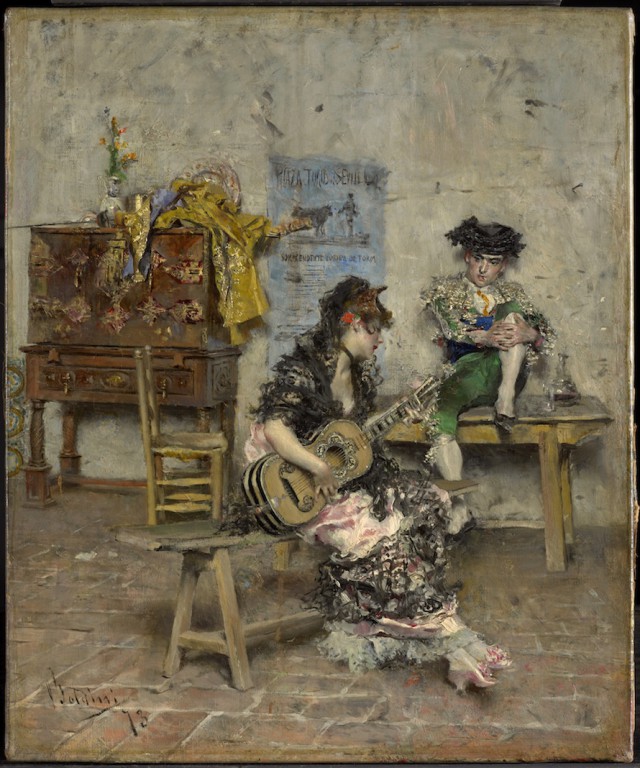Art & Exhibitions
At the Clark Institute, Giovanni Boldini’s Radical Brushwork Leans Conservative
THE DAILY PIC: In 1872, the Italian's advanced techniques helped him retrench.

THE DAILY PIC: In 1872, the Italian's advanced techniques helped him retrench.


THE DAILY PIC (#1378, Clark Institute edition): I love the way the slightest variation between two works of art can make all the difference to how they work. At the Clark Art Institute, in Williamstown, Mass., Giovanni Boldini’s 1872 Guitar Player sits on the wall not far from Impressionist paintings done at about the same time as it. (I’ll be looking at one tomorrow.) Like the Impressionists, Boldini breaks the surface of his picture down into a crazy mess of splotchy paint. The effect of his technique, however, is perfectly, even wildly, illusionistic: Almost by magic, each of his strokes manages to stand for some particular visual feature in the world. Whereas the Impressionists’ brushstrokes really do break the world apart – not into its optical component parts, as they often claimed, but into a fractured vision that the eye and brain can’t ever knit back together.
That’s why Boldini reads as the last gasp of the great illusionistic tradition of the Italian Renaissance – where we started our week at the Clark – and the Impressionists, working at the same time, with almost the same splotches, announce the ruptures of Modernism, and of modernity.
Notice that the Boldini is all about nostalgia for the trappings of the traditional culture of far away Spain, with its sword and silks and guitar evoking the greatness of the Baroque – when bravura realist brushwork first came into its own.
For a full survey of past Daily Pics visit blakegopnik.com/archive.